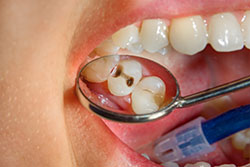
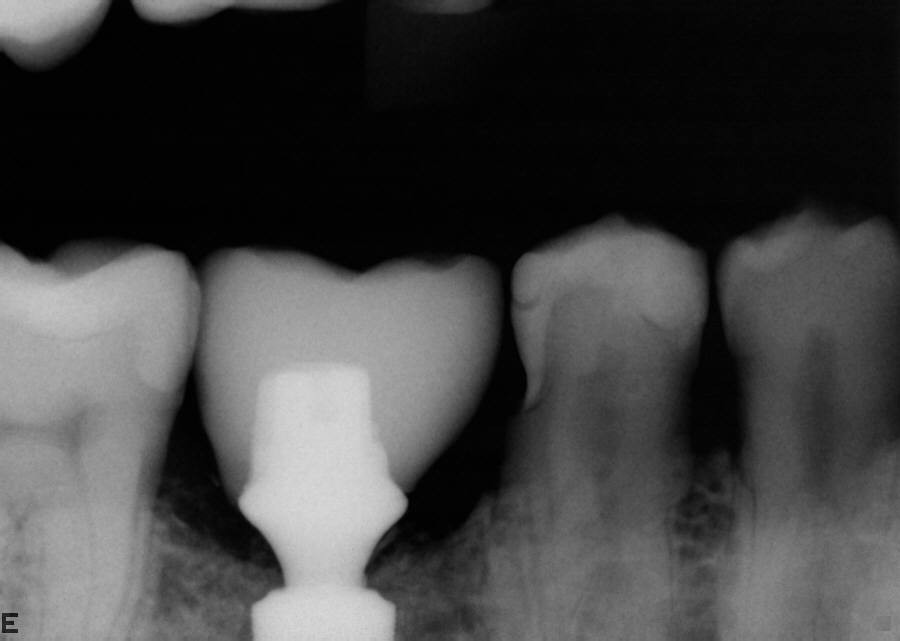
The type of cavities that we are seeing in older people who are cavity free with healthy periodontal tissue are o the root surfaces of the teeth and are called root caries.
As the name implies, root caries occur on the roots and not the enamel of the teeth. There is an entire different microbiology that is responsible for “root carries” you may have been cavity free for 70 years, and most likely you will continue to remain cavity free. But as you reach your 70s, 80s, and 90s the chemistry and quality of our saliva changes.
Q: Why are root caries an increasingly common issue?
A: Advances in medical care have helped us to live longer than ever. And advances in dental science have helped us to keep our teeth for much longer than we did in the past. Many live well into their 80s and 90s. In the past, people could lose most of their teeth to dental cavities early on, and those that survived the cavities could be lost to periodontal disease when patients enter their fifth and sixth decade. The teeth that survived the cavity, could be lost to periodontal disease when patients enter their fifth and sixth decade. Water fluoridation, public education about oral hygiene and regular dental care have helped most of the middle class urban population to avoid losing their teeth to cavities and periodontal disease. There is, however, two other factors that are more difficult to control and will come into play in the later decades of life with the teeth that have survived the enamel cavities and periodontal disease.
Another factor to consider is the fact that while the patient can be very diligent and responsible for oral hygiene and prophylactic cleanings, in their active years as they enter their 8th and 9th decades of life diminished mental and physical capabilities will compromise their attention and of their oral hygiene.
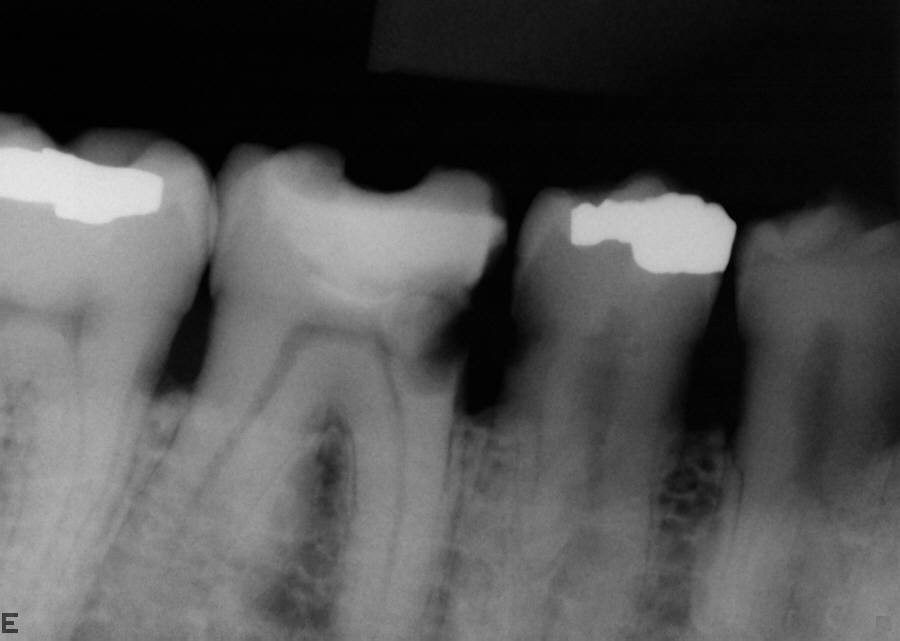
Q: Can you enumerate the factors that are responsible for this?
A: As we enter the 8th, 9th, or 10th decade of our life, we are likely to face:
- Compromised oral hygiene due to:
- Athritic pain and stiffness of finger and wrist joints, severely compromising patients’ ability to hold and maneuver a tooth brush in the mouth.
- Dementia – including alzeitemrs, and other similar diseases may interfere with the patient’s ability to continue their daily oral hygiene routine.
III. Older patients who are not independently ambulant, may have limited access to regular hygiene appointments.
- Lack of mobility and physical activity often results in food particles remaining on the teeth for days at a time. On and in between the teeth.
- Decrease Salivary Flow –
- As we age the salivary glands go through degenerative changes reducing the amount of salivary flow.
- Additionally, many popular medications have the adverse effect of causing dry mouth.
III. Radiation treatment in head and neck region / or chemotherapy.
- Change in quality of saliva – saliva contains natural enzymes that keep many pathologic bacteria like the type that causes root caries in check. As part of the aging process and degenerative changes in the glands, those enzymes become less and allow the pathogenic bacteria to flourish and cause root caries.
Q: So how do you treat root caries?
A: In my experience, patients find themselves in a frustrating and helpless situation. Unfortunately once cervical caries get established they are difficult if not impossible to control.
- The most conservative but with questionable effectiveness is to apply silver diamine fluoride to the lesions. In my experience this treatment may slow the lesions but, it does not eliminate it and makes the lesion dark brown / black. In my practice, I reserve this treatment for patients in their last years of life and / or patients who can not sit through dental work.
- One can drill and fill them like a regular cavity, but they are notorious for recurrence, as long as there are any root surfaces left in the mouth.
III. As an alternative, the existing restoration if any, on teeth can be replaced with the full coverage crown with sub gingival margins. This is not a conservative treatment with limited benefit because as the patient gets older and gums recede further, cervical caries will appear on the newly exposed root surfaces. Typically, I’m not very comfortable recommending this treatment because of its limited duration.
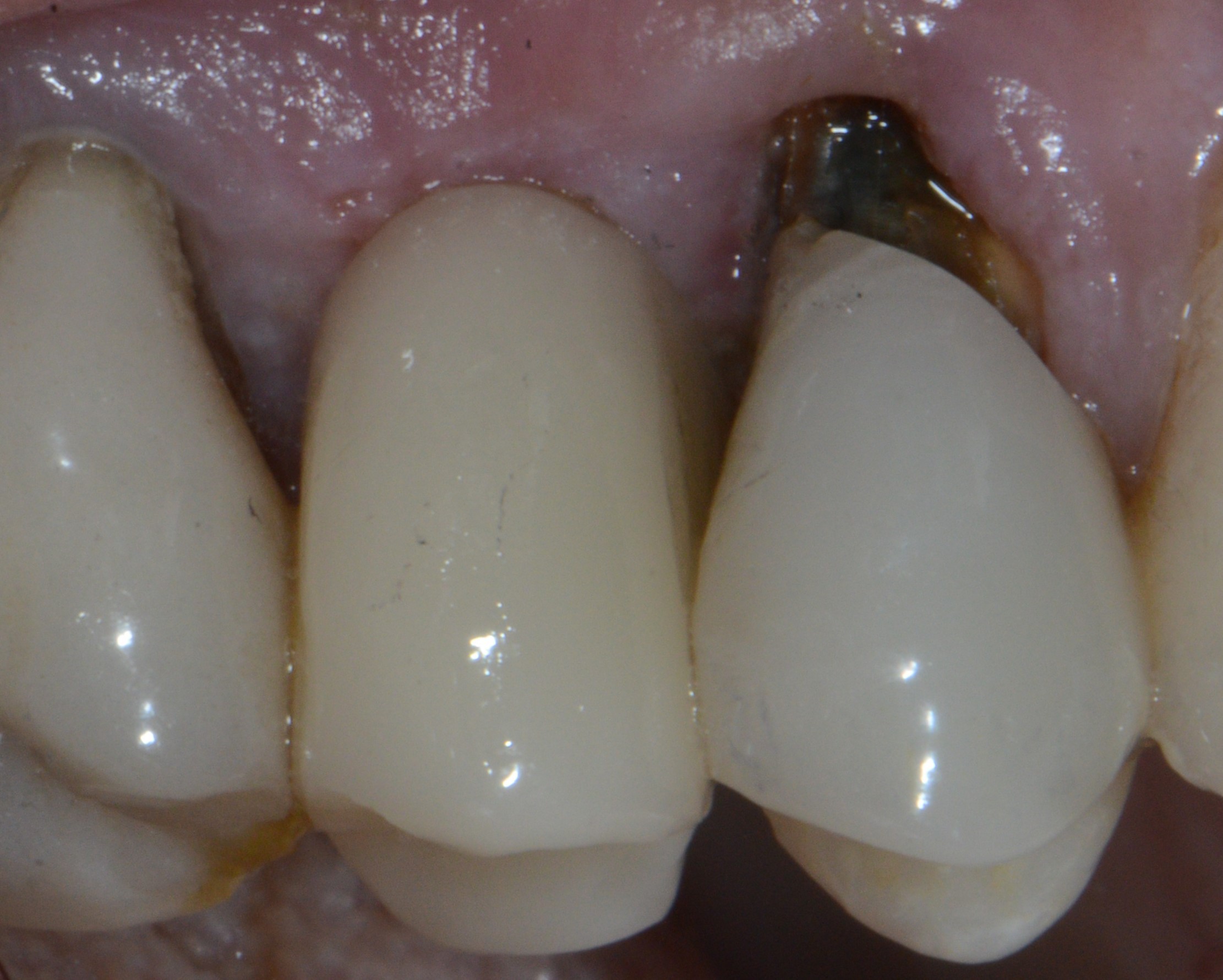
Q: Well it sounds like it’s a lose lose and frustrating situation, is there any way to prevent this?
A: In my opinion, and in my practice, prevention must start years in advance. Keeping the possibility and destructiveness of cerival caries in the last decades of life, dentists must consider and present an alternative treatment when complex procedures like a root canal therapy, crown lengthening, and post and crown is indicated for a tooth. The alternative of removal of such tooth and replacing it with a dental implant, will literally eliminate the chance of root caries.
Q: But don’t you think an implant is an expensive alternative to a crown?
A: Not necessarily. And yes, an extraction and implant are more expensive than a crown and I rarely recommend an implant instead of a crown but there are many situations that an implant will save the patient money now and a lot of headache and money later in life.
Q: So you say it’s better to get an implant instead of a root canal?
A: Absolutely not. It is always best to try to save your god given parts than to replace them with man made ones. In my practice I perform root canal treatments on average about three times a week. And I have treated over ten thousand canals over the past 35 y ears. Root canal treatment is an essential treatment modality for any dental practice. However, in 2019 it would be below the standard of care not to offer the alternative of extracting the tooth and replacing with an implant when we are faced with an infected tooth.
Q: Can you explain when you will do an implant and when you do a root canal?
A: Obviously the ultimate decision is the patients’. It is our job to present the risks, benefits, and alternatives of each treatment option and allow the patient to choose the one that would suit him/her the best. But the following are my guidelines.
- If a tooth can be successfully restored with just a crown I will not present an implant option.
- If a root canal treatment, post and crown is indicated, I will present the implant option, as an alternative treatment and have the patient decide the treatment.
In my practice, and in my hands, an extraction, implant placement, abutment and crown are much more reliable in the long term than a root canal of a multi rooted tooth with post and crown. In terms of cost, both procedures cost the patient the same amount but only the implant option can assure resistance root fractures, root canal failures, and cervical caries in the years to come.
III. If an indicated treatment involves a root canal, a crown lengthening, post and crown, I encourage the patient to opt for extraction, an implant, abutment and crown. Obviously the patient has the ultimate say in the choice of treatment. Other considerations here are that if the caries are so prevalent to require the tooth to get crown lengthening and root canal treatments, the chance that the restored tooth ends up with more caries in the next five to ten years is high. This factor sways the decision more towards implants than keeping the natural tooth.
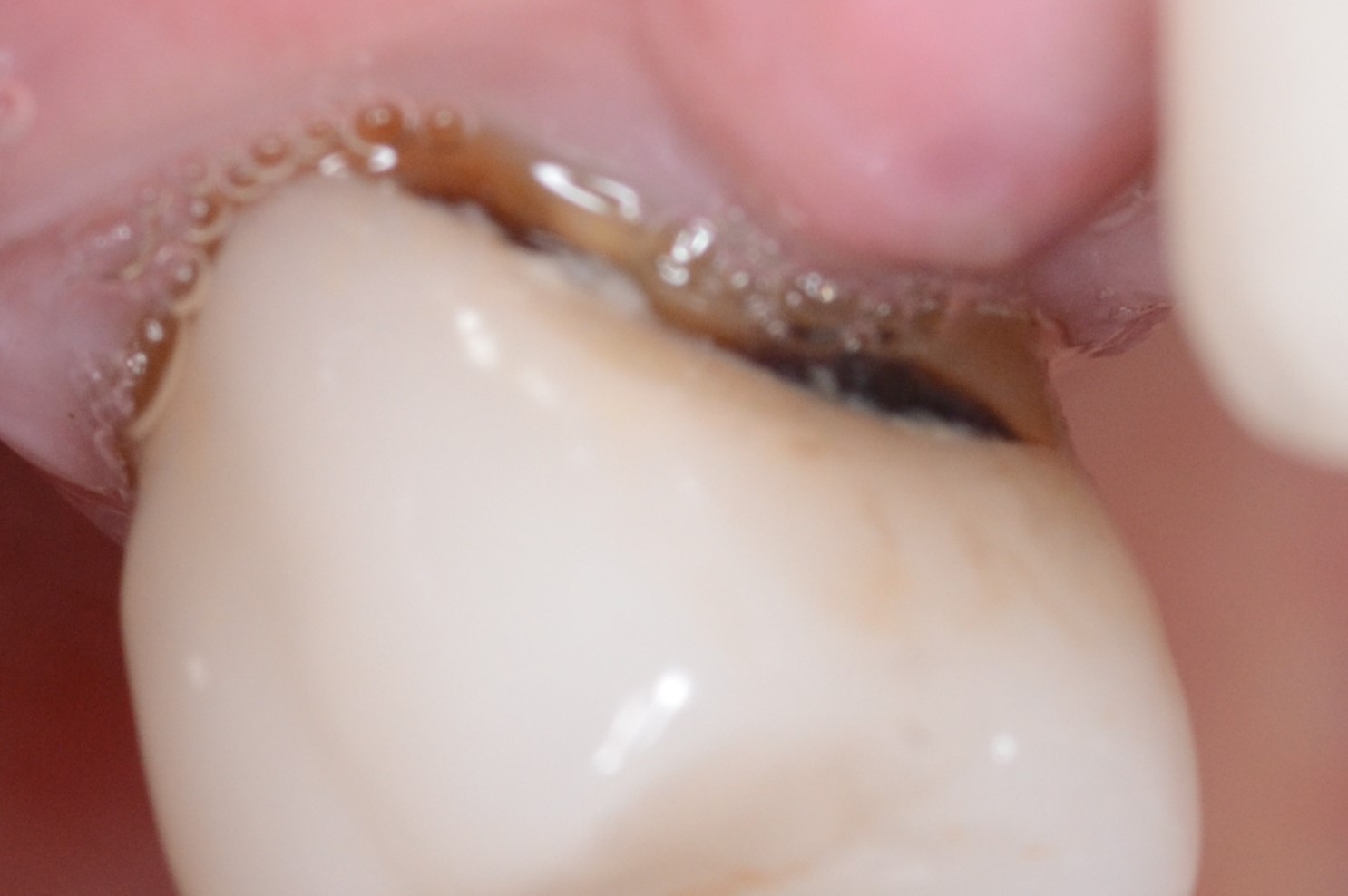
Q: So, you make it sound like an easy decision. Is it that straightforward?
A: Again, absolutely not. There are many factors that go into the play in choice of treatment for a tooth and for a mouth. In dental school, most of us learn treatment planning for individual teeth. As dentists we know that we should consider the entire person and the entire mouth when treatment planning. Often, the economic, aesthetic and time factors dictate a less conservative and more radical treatment for the mouth than it’s ideally possible for the teeth.
The important factor is that we should present not only “the ideal treatment for now” but also what the patient can expect over his lifetime from that treatment. Each patient can then decide the best route of treatment for herself / himself. The right treatment for one patient may not be the best treatment for another with the same clinical situation.

